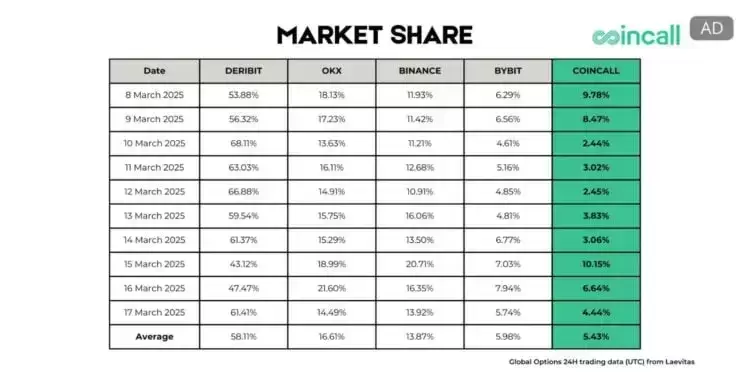 |
|
 |
|
 |
|
 |
|
 |
|
 |
|
 |
|
 |
|
 |
|
 |
|
 |
|
 |
|
 |
|
 |
|
 |
|
Cryptocurrency News Articles
Hyperliquid Delisted Solana-Based Meme Coin JELLY After a Dramatic Price Surge That Nearly Caused a $12M Vault Loss
Mar 28, 2025 at 05:37 pm
The decentralized exchange Hyperliquid has made headlines after delisting the Solana-based meme coin JELLYJELLY (JELLY) following a dramatic price

Decentralized exchange Hyperliquid has come under scrutiny after delisting Solana-based meme coin JELLY following a dramatic price surge that nearly caused a $12 million vault loss. The incident has sparked heated debates on market manipulation, DeFi governance, and the true nature of decentralization.
The scenario unfolded on March 26, when a trader opened a massive $6 million short position on JELLY using 20x leverage. Subsequently, the trader began buying large quantities of JELLY in the spot market, incrementally increasing the token’s price by a staggering 400–500%.
This unexpected rally had dire consequences for Hyperliquid’s Hyperliquidity Provider (HLP) vault, which was left with an unrealized loss of nearly $12 million. If the price had continued to rise, it could have led to the complete liquidation of the vault, potentially bankrupting the exchange.
To avert further losses and potential liquidation, Hyperliquid’s validators intervened, voting to delist the JELLY perpetual futures contracts and perform a force-settlement at a fixed price of $0.0095 per token. This move neutralized the manipulative strategy and ultimately resulted in a net gain of $703,000 for the platform.
However, while this action ultimately saved Hyperliquid, it also brought criticism regarding the platform’s governance and decision-making process. Some traders, such as Spelli, recognized the necessity of Hyperliquid’s actions in managing risk, highlighting the fact that the actions of a few should not burden the majority.
Others, like Gracy Chen, CEO of cryptocurrency exchange Bitget, slammed the decision as “immature, unethical, and unprofessional.” Chen went on to criticize the actions of Hyperliquid’s validators, comparing them to those of centralized exchanges like FTX before its collapse.
This criticism suggests that while Hyperliquid presents itself as a decentralized platform, its decision-making process may be centralized after all.
The incident also drew criticism from Arthur Hayes, co-founder of BitMEX, who questioned the level of decentralization within Hyperliquid. As Hayes pointed out, if validators can step in and force-settle positions at their discretion, then the platform may not be as decentralized as it claims.
Following the incident, Hyperliquid’s native token, HYPE, saw a sharp decline of 15%, as investors reacted to the unfolding controversy. The event has brought a new perspective to the challenges that DeFi platforms face in maintaining a balance between market integrity, risk management, and the principles of decentralization.
This case study also highlights the risks of low-liquidity tokens being manipulated through leveraged positions. For DeFi platforms to thrive, they need stronger safeguards against such strategies while maintaining transparency and trust.
As the cryptocurrency industry continues to evolve, Hyperliquid’s handling of the JELLY incident serves as a critical case study. Whether this will erode confidence in the platform or push it toward refining its governance remains to be seen. One thing is clear: the fine line between decentralization and intervention in DeFi is becoming more complex than ever.
Disclaimer:info@kdj.com
The information provided is not trading advice. kdj.com does not assume any responsibility for any investments made based on the information provided in this article. Cryptocurrencies are highly volatile and it is highly recommended that you invest with caution after thorough research!
If you believe that the content used on this website infringes your copyright, please contact us immediately (info@kdj.com) and we will delete it promptly.
-

- Sui (SUI) Is Set for a Major Supply Event, with 64.19 Million SUI Tokens Worth Approximately $148.29 Million Scheduled for Release on April 1
- Mar 31, 2025 at 03:25 pm
- Sui is set for a major supply event, with 64.19 million SUI tokens worth approximately $148.29 million scheduled for release on April 1, sparking concerns
-

-

-

- California Lawmaker Just Added Bitcoin and Crypto Investor Protections to a February-Introduced Money Transmission Bill
- Mar 31, 2025 at 03:20 pm
- A Californian lawmaker has just added Bitcoin and crypto investor protections to a February-introduced money transmission bill aimed at securing crypto self-custody rights
-

-

- Coincall Officially Enters the Top 5 Cryptocurrency Options Exchanges Worldwide
- Mar 31, 2025 at 03:15 pm
- The cryptocurrency exchange Coincall has officially entered the ranks of the top five cryptocurrency options exchanges in the world, achieving this milestone just 18 months after its establishment.
-

-

- Cryptocurrency Market Shrunk Considerably Last Week Despite a Few Lesser-Known Coins Netting Significant Returns
- Mar 31, 2025 at 03:10 pm
- The cryptocurrency market shrank considerably last week due to an uncertain macroeconomic environment, although a few lesser-known coins netted significant returns.
-



























































